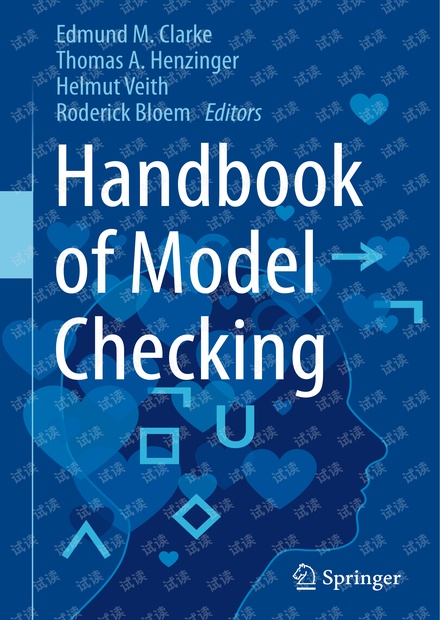With 32 technical articles and 76 authors, this handbook represents a full postgraduate course in Model Checking. If a reader can verify that he or she has read and studied every article, then Springer should certainly award that reader a Master’s Degree inModel Checking! Departments in Computer Science everywhere will certainly welcome access to this major resource. Model Checking has become a major area of research and development both for hardware and software verification owing to many factors. First, the improved speed and capacity of computers in recent times have made all kinds of problem solving both practical and efficient. Moreover, in the area of Model Checking the methods of design of models have contributed to the best formulation of problems. Then we have seen SAT solvers gain unexpected and truly remarkable efficiency improvements—despite theoretical limitations. Additionally, the methodology of Satisfiability Modulo Theories (SMT) has contributed to finding excellent ways to pose and solve problems. Uses of temporal logic and data-flow-analysis techniques have also made model checking more naturally efficient. All these contributions have helped solve the ever-present “state explosion problem.” The urgency to make greater strides has increased because new applications in such diverse areas as health care, transportation, security, and robotics require work in the field to achieve greater scale, expressivity, and automation. I would definitely recommend new Ph.D. candidates look seriously into going into research in this field, because success in Model Checking can directly lead to future success in many other activities in Computer Science. Finally, the recent tragic loss of Helmut Veith has been a dreadful blow to his family, friends, colleagues, and students. Let’s take up the flag in his honor to help promote and expand the field in which he was poised to become a recognized world leader. Carnegie Mellon University Dana S. Scott Department of Mathematics, University of California, Berkeley





剩余1209页未读,继续阅读
- 粉丝: 23
- 资源: 6
 我的内容管理
收起
我的内容管理
收起
 我的资源
快来上传第一个资源
我的资源
快来上传第一个资源
 我的收益 登录查看自己的收益
我的收益 登录查看自己的收益 我的积分
登录查看自己的积分
我的积分
登录查看自己的积分
 我的C币
登录后查看C币余额
我的C币
登录后查看C币余额
 我的收藏
我的收藏  我的下载
我的下载  下载帮助
下载帮助

会员权益专享
最新资源
- zigbee-cluster-library-specification
- JSBSim Reference Manual
- c++校园超市商品信息管理系统课程设计说明书(含源代码) (2).pdf
- 建筑供配电系统相关课件.pptx
- 企业管理规章制度及管理模式.doc
- vb打开摄像头.doc
- 云计算-可信计算中认证协议改进方案.pdf
- [详细完整版]单片机编程4.ppt
- c语言常用算法.pdf
- c++经典程序代码大全.pdf
- 单片机数字时钟资料.doc
- 11项目管理前沿1.0.pptx
- 基于ssm的“魅力”繁峙宣传网站的设计与实现论文.doc
- 智慧交通综合解决方案.pptx
- 建筑防潮设计-PowerPointPresentati.pptx
- SPC统计过程控制程序.pptx


 信息提交成功
信息提交成功
评论0